After many years of discussing gearboxes with engineers, we have developed a questionnaire we use to ensure that we have found all the necessary details of an application. We use this even if the engineer specifies our standard part number. The correct gearbox may have been chosen, but:
1. Are there any lower cost alternatives to consider based on the specific application?
2. Is the gearbox appropriate for the operating environment?
3. Could a smaller gearbox be selected based on the duty cycle?
Some of these questions may seem simple but they allow us to think about the application as a complete system. The brief explanation of various gearbox-sizing parameters below may help you clarify your application before calling a gearbox manufacturer. With this information, gearbox manufacturers can better assist you in selecting the correct gearbox for your intended application.
1. Your choice: standard, modified standard, or complete custom
This tells us quickly where we must focus. If you say, “I need a standard,” then all other avenues are eliminated. Some companies are willing to customize their standard gearboxes.
2. Main specs
Published specifications are standard and need no clarification except for ratio and backlash.
Ratios are generally standard from 1:1 to 120:1, but can be higher depending upon the gearbox. Many manufacturers can supply custom ratios at initially higher prices and when quantities are ordered they are usually priced similar to standard ratios. Delivery is a factor when considering a custom ratio.

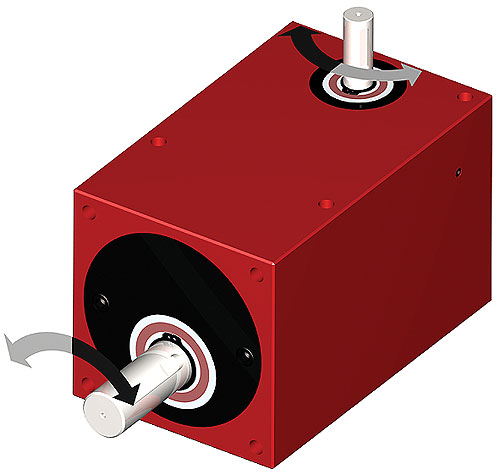
Examples of Counter Rotating Output gearboxes.
Most gearboxes have backlash ratings of less than 1 degree (60 arc-minutes). Many are rated at half of a degree (30 arc-minutes). After this point, “low backlash” gearboxes come into play for positioning applications. Depending upon the manufacturer and the gearbox type, low backlash can start at 10 arc minutes and can be 8 or 5 or even 1 arc-minute. When you get down to 1 arc-minute there may not be many manufacturers that can supply such a high precision gearbox, which may be a consideration.
3. Operation (duty cycle)
While most performance specifications are based on a 24-hour day, generally any 8 or 12 hours for 5 days a week is considered full time operation. Maximum heat rise will occur well within 8 to 12 hours of operation time.
There are many applications that have a low duty cycle where you can use a smaller gearbox without degrading life or destroying gear teeth. Most manufacturers rate the gearboxes for wear strength, giving a wide margin over actual gear teeth ratings. So if a gearbox is used in a step and hold cycle with the step cycle short and the hold time long (compared to the step cycle), it is possible that a smaller gearbox or a slightly modified smaller gearbox can be used.
For example, in one defense contractor application for a sea going vessel, we chose a gearbox rated at 100 Nm. Without taking into consideration the duty cycle, someone may have specified a gearbox with twice that rating. But the device would only be adjusted through a hand crank six to eight times a year, so we knew we would have some room. Plus, we changed the material on the gears and the worm to a harder heat-treated material. The gearbox met the specification, and had extra capacity. They wanted a rating of 150 Nm and we got up to almost 200 Nm with stronger teeth, so there was a wide safety margin. Had the application been for more than 1000 rpm, this gearbox would have been the wrong choice.
4. Temperature range
Below -20° C, special low temperature greases are required. Knowing the operating temperature is required to ensure proper function.
5. Grease/oil
This factor is mostly related to temperature, but there may be other considerations. Gearboxes can be supplied with vacuum rated grease, no grease at all, and oils for higher or lower temperature operation.
6. Environment
This is one of the most important specification areas. Once we are outside the standard factory environment every factor becomes important. Temperature is one part of this equation.
Ocean salt-water applications and wash-down applications can be rated using the IP Code. IP codes specify how well sealed a gearbox is against intrusion from foreign matter and covers particle sizes down to no dust entry allowed (first digit 1-6) and water from drops to no water entry allowed (second digit 1-8). An IP67 rating means no dust entry and no water entry at 1 m submersion. Food processing applications may require special lubricants and housing, bearing or shaft materials.
7. Input needs
These are straight forward, except when a custom motor flange is required. It is very important that you send the PDF of the motor or the motor manufacturer’s direct web address of the data to your supplier. Often we are unable to find the part number on the manufacturer’s site for many reasons. Emailing this information saves time and allows your supplier to answer your request faster.
8. Output needs
Bores: Basic items such as diameter, length of bore, and keyway are straight forward; however, hex, square, D or splined bores can be done. When your requirement is different than the standard bore it generally will be more expensive in prototype or small quantities.
Shafts: Usually the normal output shaft is round but it can be supplied as a hex, square, D or splined. Key slots need to be clearly specified as to length, width, depth and location along the shaft. Other alterations might include cross-drilled holes, milled flats or retainer ring groves.

Output Rotation: Most gearboxes with clockwise (CW) input give a counter clockwise (CCW) output rotation. Worm Gearboxes and Helical Gearboxes can be supplied with left hand lead angles and they will then have a clockwise (CW) output when the input is turned clockwise. There are also gearboxes with dual counter rotating output shafts. The output direction of spur gear boxes depends on the number of gears used in the gear train.
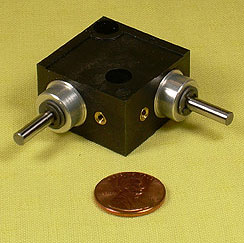
Gearbox with a plastic housing.
9. Housing
If the gearbox is standard, the material is known and is not in question. However if the gearbox will be used in a wash down application such as food processing or a marine situation, a more corrosion resistant material such as stainless steel or aluminum with a hard anodized finish may be required.
If you are looking for a modified standard gearbox, a drawing is required with your changes clearly noted to ensure there are no misunderstandings between yourself and the gearbox manufacturer.
In custom situations it is important to initially describe any size restrictions to ensure the proposed gearbox fits appropriately into your system.
10. Other considerations
Will this gearbox be used as a speed increaser rather than a reducer? The answer is important to the gearbox manufacturer. Worm gearboxes for example should never be used as speed increasers.
Do you expect the gearbox to maintain position when the power is turned off? Most gearboxes will back drive if there is a load on the output. High ratio worm gearboxes are considered “self locking” but even these may creep backward with time and vibration. Some manufacturers can supply gearboxes with attached or integral drag brakes to prevent back driving.
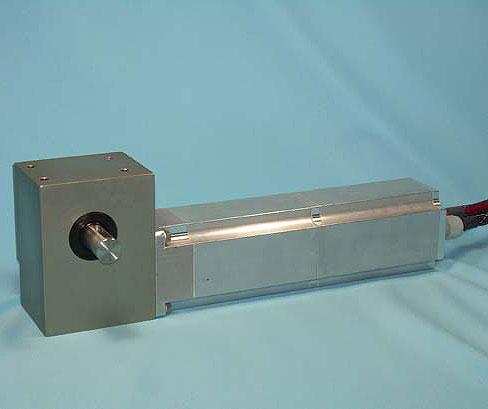
Gearbox suitable for marine applications.
We recently had a customer design a lift table with a high ratio worm gearbox that was driven by a removable hand drill. They expected that the gearbox would self lock and prevent the table from lowering. They discovered that the table would sometimes begin to slowly decline as they were transferring a heavy load onto the table. When they contacted us with their problem, we immediately suggested installing a small mechanical drag break on the input shaft. Problem solved and customer happy.
In most applications, conversations are needed to clarify the specifications before a quote is issued. Ask that all your specifications, written and verbal, be included in the formal quote from the manufacturer(s). This will confirm that all quotes are the same so you can compare them properly. Some manufacturers will supply a drawing or CAD.stp file for approval.
Lastly, every once in a while a really “interesting” request comes in. In one luxury liner application the problem was noise. The gearboxes were used on automatic door openers on the ship. They were initially made of 316 stainless components, with o-ring seals, marine rated for spray, hard anodized finish, water resistant housing with brass worm and output gear. But the owner complained about the noise coming from the brass worm gear. We found an engineered polymer that is almost as hard as the brass worm gear. After reviewing the samples, the owner was happy with the change.
Rino Mechanical
www.rinomechanical.com
Filed Under: MECHANICAL POWER TRANSMISSION, Gears • gearheads • speed reducers

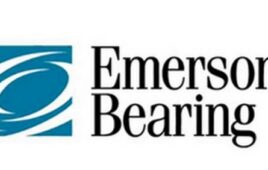
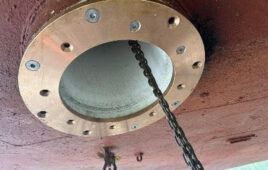

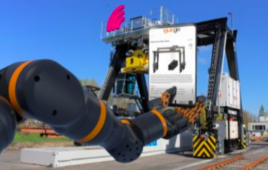
I have to design a two-stage 2.5:1 reduction gearbox for a boat.
But I have no experience in the field of designing gearboxes.
How would you go about this design?
Any help would be greatly appreciated.